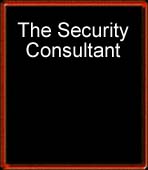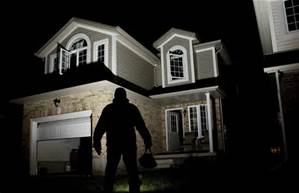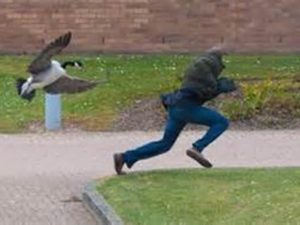
In my physical security consulting business I recently consulted with the owner of a strip mall concerned with transients loitering in the evening hours and sometimes aggressively panhandling. This small strip mall consisted of 11 small businesses – a 24-hour “Quick Mart,” a hair and nail salon, a tattoo parlor, tax preparation business, deli, and the like. The owner posted NO TRESPASSING and NO LOITERING signs but they proved to be ineffective and gave patrons a sense that there was a problem which made some feel edgy. At one point the mall owner even hired a security officer to patrol the parking lot during evening hours. This was effective but the cost of hiring security was significant and not something the owner felt he could sustain. Furthermore, the owner did not like the image of a uniformed security officer moving people along. He wanted a less expensive, long term solution that did not make patrons feel uneasy.
Security solutions must support business operations and strategically align with business goals
The first step in solving any security problem is to conduct a systematic inquiry and really understand exactly what the problem is. Sounds logical and simple – and sometimes it is. But you would be surprised how many times people perceive problems inaccurately and as a result spend expensive time and effort creating elaborate solutions that are not cost effective. From a business perspective, all security solutions must be cost effective and simple to deploy and maintain.
While assessing the extent of the problem I conferred with all of the business owners and managers and even talked to some long time customers. Then, I spent many nights watching the parking lot. Frankly, I did not witness any big transient problem but even a few unsavory people hanging around can make patrons and business owners uneasy. What I did notice was that most of the of the “undesirables” were congregating at the far end of the parking lot near several park style benches that were popular with the noon time lunch crowd. Most did not congregate for hours and hours, but because this mall was near a major suburban thoroughfare, as soon as they left it didn’t take long for others to show up.
Clearly, there was a need to use some Crime Prevention through Environmental Design (CPTED) principles and alter the composition of the environment in this area to deter the “undesirables.”
Blue lights combined with music
A while back I wrote an article “Outdoor Security Lighting: Consider Going Blue” about how blue lighting could be used to deter criminal and undesirable behavior in specific circumstances. The use of blue lighting is something I now recommend more and more in my physical consulting business, because in targeted areas it is simple, inexpensive, and it works!
In this case, I recommended that the typical white outdoor flood lights illuminating the area around the park benches be replaced with blue flood lights. All other areas of the mall parking lot should continue using the typical white light. The blue lights were put on a motion sensor so when someone entered the area around the park benches, the blue lights were automatically activated and immediately flooded the target area with BRIGHT blue illumination creating a highly visible contrast from the rest of the mall.
Additionally, I recommended the installation of strategically situated outdoor speakers. As soon as the blue lights were activated, classical music would start and continue in 10 minute intervals. The music was loud enough so that anyone loitering in the target area could clearly hear it (in fact it was a little bit louder than what a normal hearing person would be comfortable with) but patrons at other areas of the mall could only hear it in the distance if they were really paying attention.
Classical Music? Really?
Yes! There is empirical and anecdotal evidence that suggests music can influence many aspects of human behavior. The United States military has used heavy metal music to “soften” up prisoners for interrogations. Music has also been used in retail marketing. Retail marketing experts report that music can help shape customers’ time perception, lower sales resistance and can increase a customer’s willingness to spend. Market research shows that music can affect sales, and large merchandisers spend a lot of money to determine the best music for their intentions. Fast music encourages speed from customer for high turnaround, while less tempo music slows them down and makes them spend more.
For those scholarly readers who like to delve deeply into scientific research, I suggest taking the time to view and listen to a discussion by Dr. Jacqueline Helfgott, of Seattle University. Published by the Library of Congress entitled, “Music and the Brain: Music, Criminal Behavior, and Crime Prevention.” This discussion can be found at https://www.youtube.com/watch?v=lFTjfsEy27Y
Reports from around the United States and the world suggest music can be used to deter crime. This is not really new news. In 2003, London began piping classical music into its public transit system as part of a pilot program. According to reports, robberies dropped by a third, assaults by a quarter and vandalism by 37 percent within 18 months of implementation. Experiments have also been conducted in Sidney, Australia, Newark New Jersey, Portland Oregon, Los Angeles and a number of other cities with similar results.
No one seems to really know why Bach, Chopin, Beethoven and other classical masterpieces, as well as smooth jazz, seem to dissuade crime, but there are several theories. Some believe that the music sooths listeners, making them more easy going and docile, but most believe that the sounds of classical music and smooth jazz flowing out of speaker systems drive away the most common perpetrators of most forms of deviant behavior – drug dealers, gang members, and vagrants.
Classical music and smooth jazz being projected through train stations, bus terminals and other forms of public transportation are so far from the mainstream music to which most listen that those who are hanging around (loitering) without a purpose simply elect to vacate the area.
West Palm Beach police even tested the theory by placing a CD player and speakers in an abandoned building in a high-crime area. From February to June calls reporting drug deals in the area dropped from 20 to four, compared to the same time period the year before, even though vandals damaged the speakers and the power meter in an effort to stop the “annoying” music. It took three weeks for police to reinstall the system and bring back the soothing sounds to the neighborhood. Of course, police acknowledged that less-desirable elements probably just moved to different areas, but it definitely seemed to work in that location.
Conclusion.
How effective different types of music – classical, soft jazz, Barry Manilow, heavy metal, etc. are in deterring specific types of crime or simply undesirable behavior has not been studied much. Neither has the use of bright blue light in a security setting. Clearly, blue light coupled with music is not applicable to all security situations, but in some circumstances I have found it to be a practical, cost effective, and “business friendly” part of any overall security strategy. It may sound a little unconventional but as long as I continue to see results, I will continue to recommend it to my clients when appropriate.




